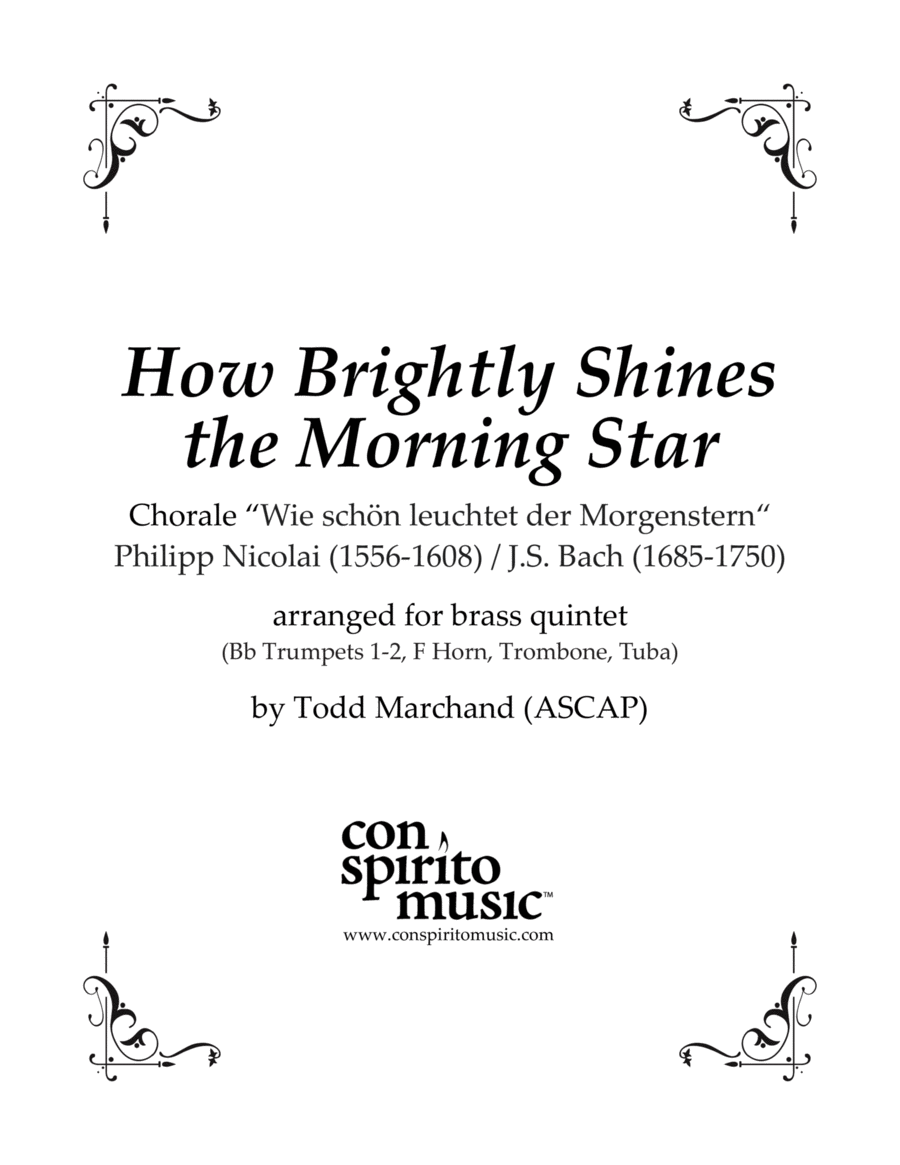Brass Ensemble Horn,Trombone,Trumpet,Tuba - Level 3 - Digital Download SKU: A0.726082 Composed by Philipp Nicolai / J.S. Bach. Arranged by Todd Marchand. Christmas,Sacred. Score and parts. 14 pages. Con Spirito Music #3897165. Published by Con Spirito Music (A0.726082). Wie schön leuchtet der Morgenstern (How Brightly Shines the Morning Star) was written by the German Lutheran pastor, poet, and composer Philipp Nicolai (1556-1608) and published in a collection of his hymns in 1599. Based on Psalm 45, Nicolai's text identifies Jesus Christ as the celestial bridegroom of the psalm and with the bright morning star described in Revelation 22:16.Nicolai also authored and published the hymn, Wachet auf, ruft uns die Stimme (Sleepers, Wake! A Voice Astounds Us) in the same 1599 collection. Together, Wachet Auf and Wie schön leuchtet der Morgenstern have been called The King and Queen of Chorales.Johann Sebastian Bach (1685-1780) used the Morning Star chorale as the basis of his cantata, Wie schön leuchtet der Morgenstern (BWV 1) and individual verses of the text in several other cantatas. Bach also used the tune as the basis for several organ preludes. Other composers to have used the tune in their works include Johann Pachelbel, Dieterich Buxtehude, Max Reger, Hugo Distler, and Howard Hanson.In this arrangement, both Bach's harmonization and original harmonies are employed, as well as original material for the introduction, interlude/modulation, and ending.©Copyright 2018 Todd Marchand / Con Spirito Music (ASCAP). All rights reserved. Visit www.conspiritomusic.com
